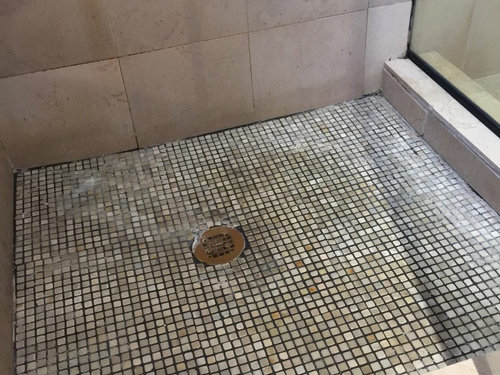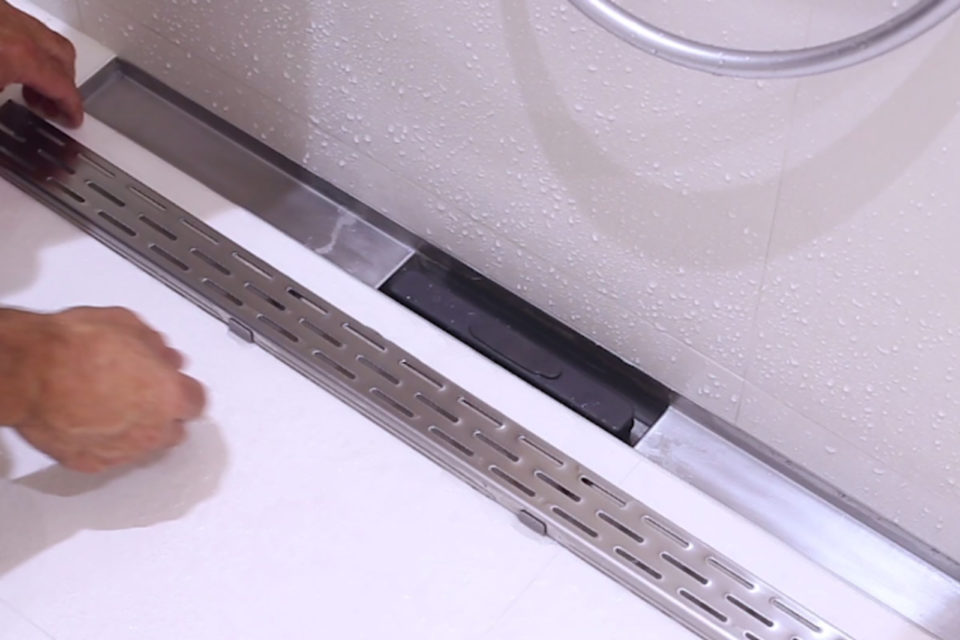Undertaking-Executing-Completing Your Own-Personal-DIY Shower Drain-Bathroom Drain-Drainage System Installation-Setup-Project
Undertaking-Executing-Completing Your Own-Personal-DIY Shower Drain-Bathroom Drain-Drainage System Installation-Setup-Project
Blog Article
How do you feel in regards to How to Install or Replace a Shower Drain?

Updating a bathroom is among the extra preferred home enhancement tasks. Dealing with the plumbing for draining your shower can be exceptionally straightforward unless you go overboard.
Handling Your Own Shower Drainpipe Installation Project
Whether you are a tub or shower individual, most people try to find shower just options when purchasing a house. This simple reality indicates greater than a couple of house owners invest a weekend break upgrading or mounting showers in their restrooms. Luckily for you, it is a rather straightforward process.
A collector or pan describes the straight surface area situated at the bottom of the shower. The collector usually consists of a non-slip surface somewhat banked in the direction of the facility or any place the drainpipe lies. Incorporated with 3 to 4 inch wall surfaces around the side, the objective of your shower water drainage plumbing is to get the water to flow to and down the drain.
You can physically build a collector for your new shower, but you really require to think about it. Do you truly intend to get involved in the difficulties of obtaining the sloping proper, as well as making certain every element of it is water resistant? As well as I indicate every element! It is much easier to just buy a pre-cast collector online or at your neighborhood Lowes, Residence Depot or equipment store. Building one might sound like a great suggestion, yet you will most likely feel in a different way after a couple of hrs.
No matter exactly how you tackle getting a pan, you need to strive to utilize one that has the drain situated in the very same spot as the initial pan. Moving the drainpipe pipelines can be a task, particularly if the building contractor used an one-of-a-kind framework structure. If you are established to relocate the drain, you are mosting likely to need to reduce the pipeline or lengthen it, which might indicate ripping up huge chunks of the flooring. Put another way, you are going to be considering a multiple weekend break job.
Assuming we have our drainpipe lined up, the real attach is fairly basic. The drain pipeline ought to be facing upright up to the enthusiast. It will commonly look like a "U", which indicates it acts as a cleanout to keep unpleasant smells from returning up from the drain. To attach the drain, you are mosting likely to create a water limited connection between a drainpipe cap on the top of the pan and also the drainage pipe. Equipments vary, however you are typically mosting likely to do this by placing a coupling item on the top of the water drainage pipe. This is after that covered with gaskets and actually screwed right into the drain cap. The drain cap need to serve as a locknut, to wit, it screws straight onto the combining.
The difficult part of this procedure is obtaining your drainpipe cap to fit into a leak-proof placement in the pan. This is achieved by withdrawing the drain cap when you make sure every little thing fits together. At that point, you put plumbing technicians putty around the bottom of the cap and then screw it back on. The putty ought to develop a limited seal in between the cap and the shower pan, which maintains water from flowing under it and also into the framing under the shower.
Certainly, shower room showers been available in a variety of designs nowadays. If you purchase a collector, they usually included plumbing guidelines or the shop can keep in mind anything uncommon you need to know. It sounds complex, however is usually quite direct. Enjoy!
Tips for Installing a Shower Drain Assembly
Renovating a bathroom can be exciting as well as fulfilling if you’re tackling the job DIY-style. After you cross off the bigger decisions such as tile style, paint colors, and fixtures, you’ll need to finalize smaller details – such as the shower drain. In this article, we’re sharing some tips for selecting and installing the right drain assembly for your updated shower.
What is a shower drain assembly?
Shower bases or pans typically only come with a pre-drilled drain hole. Since the pan slopes toward the drain, you should consider the placement – left, center, or right – when designing your shower. You’ll need to purchase and install a shower drain assembly that connects the shower pan to the drain pipe underneath the shower. There are a few types of assemblies, which will be covered below.
Size of a shower drain
When it comes to installing drains, size matters. The recommended pipe size for a shower drain is 2 inches, whereas most tubs use 1.5-inch pipes. Why the difference?
Shower pans are shallower than tubs, so there’s a higher risk for overflow. So, the larger pipe allows for quicker draining. If you are replacing an old tub with a newer stand-up shower, you will need to make additional plumbing adjustments to accommodate the 2-inch pipe.
Types of shower drain assemblies
There are three common types of shower drain assemblies: compression shower drain, solvent-glue shower drain, and tile shower drain. The layout, design, and materials of your shower can determine which type of shower drain assembly will work best.
Compression shower drain
This type of assembly attaches to the drain pipe with compression washers and nuts. The drain fitting is typically installed into the base, and then the base is installed into the bathroom floor. This makes compression-style drains easier to install than other options, particularly if you don’t have easy access from the floor under the shower base. Drains are available in a wide range of materials such as PVC (polyvinyl chloride), ABS (Acrylonitrile Butadiene Styrene), and brass, and can be used for acrylic, fiberglass, and steel shower bases.
Solvent-glued shower drain
Made of either polyvinyl or ABS, this type of shower drain is sealed to the drain pipe with solvent glue and silicone. Since you’ll be working underneath the drain pan, we only recommend using this type of drain if you have access under the shower, such as from a basement or crawlspace. It’s also important that you match the type of plastic of the drain with the drainpipe. If you take these precautions, you can install a solvent-glued drain assembly with acrylic, fiberglass, and steel shower bases.
Tile shower drain –
Drain assemblies for custom tile showers feature a waterproof membrane liner placed between two flanges. The tile is installed on top of the liner, collecting any water that seeps through the porous grout. A metal strainer is installed in line with the tile over the drain.
https://www.epshawaii.com/blog/tips-for-installing-a-shower-drain-assembly/

I am just very intrigued by How to Choose the Best Drain for Your Shower and I hope you appreciated my entry. Do you know about someone else who is inquisitive about the niche? Why not promote it. I love reading our article about Simple Steps for Installing a Shower Base.
Report this page